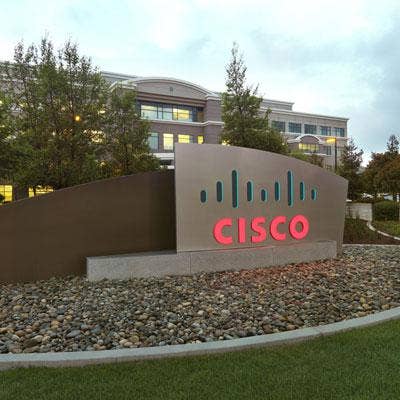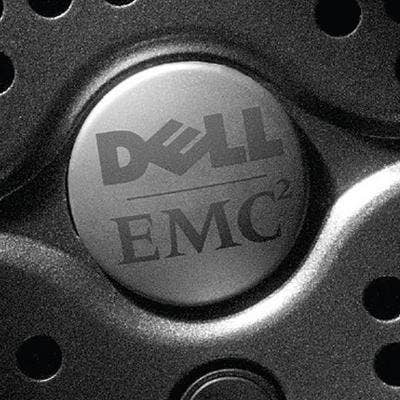CRN Exclusive: Dell EMC Channel Chief Byrne On 'Significant Investments' In EMC Rebates, Competing Against Cisco And The 'Mystique' Of Titanium Black

Byrne On The Record
Dell EMC Channel Chief John Byrne says the unified channel program that his team is designing will be able to go toe-to-toe with the best programs in the world, including Cisco's, and will offer legacy EMC partners "massive progress" on rebates and MDF.
Byrne and his team have set the new program's tiers, and has decided to "status match" partners into those tiers. Partners from the top tiers of the old Dell and EMC programs will be moved directly into the top "Titanium" tier of the new program, for example.
Byrne said that while a lot of progress has been made in combining the Dell EMC programs, there's still much to do in the next six weeks, including evaluating partners that may not be hitting their revenue, training and certification goals. The program is expected to be complete and ready for action in time for the beginning of Dell EMC's fiscal year Feb. 1.
"We've done a lot of things just listening to the community, and we made a commitment that, one, this was going to be the most desired and lucrative channel program on the planet," Byrne said. "We also said it was going to be very simple, very predictable and profitable. Those tenets remain firmly in focus of everything we're doing."
What follows is an edited excerpt of Byrne's conversation with CRN.

How well do you think what you've built so far aligns with shifting customer habits toward cloud and software-defined?
Where we are in the journey, we are right on track. I'm even more excited now than I was at Dell EMC World. The team has done a remarkable job. This team's been together for three months. We know clearly where the channel has been playing. We know clearly the partners we have across both communities. We know the share of wallet we have. We know what our capacity is. We know how we're paying people. We know how we want to pay people. We have a clear understanding of how we want to train people. We have a very nice roll out plan. We've been extremely inclusive, and will continue to do so with the partner community. Where we're moving in software-defined, where we're going in cloud, when I look at CI (converged infrastructure) and HCI (hyperconverged infrastructure), I think what we're building here, we're trying to build a world-class program. The EMC program, while it was simple and predictable, people were just not making the returns on investment that those partners deserve.

Can legacy EMC partners expect greater rebates under the new program?
We will be making a significant investment in our EMC partner program. It will return to competitiveness. It will be competitive on rebate and it will be competitive on MDF. That is massive progress.

Compare this with Cisco, which is the traditional channel incentive leader. You are now the biggest IT company in the world. How does this program stack up against Cisco?
It's not for me to comment on Cisco's program. I do think Cisco's program is a fairly robust program. I will say to you that my commitment was to bring a world-class combined program to the channel, and I think we're right on track.

What do you say to partners who tell you they want to make the software-defined leap and drive market share? How does your program stack up against the others?
When I do have those conversations, when that partner hears about our breadth of portfolio, when they actually realize that Dell's program has been growing 3-4X the market, when they hear our channel business is $35 billion, I don't think there's any competitor that is growing at that pace versus the market, and I will say we are the dark horse in this market. Our share of wallet is still small. So when I look at the solution capabilities we're bringing, the solution competencies we're brining, the awards we're associating with it; all of that combined, and we really want to work with the partner community to attack the market, I think the fact that my phone is ringing constantly from partners, from distributors, from our competitors' partners, I think we're doing something right, but we have a very busy six weeks ahead of us.

How are you unifying two channel programs that encompass two very different partner communities?
When you bring the Dell community and the EMC community together and you outline, whilst there are a lot of similarities between the programs, the criteria was very different. As an example, in North America, to get into the top tier of the [EMC] program, the revenue had to be in excess of $100 million. On the Dell side, for classic enterprise products, it was $5 million to get into Premier Plus, and $7 million for client. When you looked at them, it was like, wow, that's a huge challenge. We want to be very fair to those partners. We want partners who want to sell multiple lines of business. We want partners who want to attack the market with us, to go after net-new logos or net-new customers. In a mature market you've got to have people who want to take things from someone else. We want partners to feel ultimately like they're an extension of our sales team.

How does that impact your thinking around how the program's tiers will be organized?
We had a couple of options. We could snap the line and take the EMC criteria and have partners that fall off some of the tiers. That's not the right thing to do. The partners have done a great job, and the fact that one's program may have evolved further along on the journey than the other doesn't mean that you cause a lot of emotion and frustration in the community. We made a decision after significant feedback from the partners that we will status match the partners in the new Dell EMC program.

What does that mean?
If you're a Premier Plus today with Dell, you will move into Titanium, the top tier of our program.
Regardless of your revenue number?
Regardless. If you're Platinum with EMC, you move right into Titanium. And if you follow the same logic, those relevant tiers come straight across. So the next level comes into Platinum and the next level comes into Gold. EMC Platinum goes to Titanium. Gold goes to Platinum. Silver goes to Gold. Authorized in the new Dell EMC Partner Program, the new category below Gold will be Authorized. If you look at Dell's program, Premier Plus goes to Titanium. Premier goes to Platinum. Preferred goes to Gold.

That explains how you're treating existing Dell and EMC partners. What kinds of revenue thresholds are new partners looking at?
The team has done an unbelievable job. When I look at the partner community, the partner ecosystem we have, it is powerful. My issue is do I need to add more partners and get after them? What I want to be able to do is by making this commitment to the partners, I am looking for them to expand the share of wallet. We want to expand the share of wallet with them. If you're in a legacy Dell or EMC partner program today and you're not achieving the criteria we have, the revenue criteria, and the training and certs as well; if you're not achieving that criteria or on track to achieve that criteria this year, I will reserve the right not to status match you into the program.

How much do they have to be missing by?
We will be letting them know. On Tuesday they will be getting a status update to let them know where they are, where they've got to be to be grandfathered in. We don't have a threshold that says you've got to be within five percent. We're going to be fair. We're going to listen to the voice of the partner. If you're within range, and you're pushing, gunning to get there by the end of this fiscal year, we're going to do the right thing. If you're nowhere close and showing no intention of getting anywhere close, that is when we'll reserve the right.
How many partners aren't going to make it?
That is in process right now. Literally in real time. I'm not going to be disrespectful, or guess the numbers. We're going to be saying this is where you are, this is your status. By the end of January, we're going to be saying here is the future criteria by tier to get into the program.

How do partners get a seat in one of the tiers?
There'll be two ways to get into each of the tiers. One way is you do a chunk of revenue, and I'll give you what that revenue will look like, clearly. You may be an expert on one line of business. You may be a big player and we want to bring you in with the caveat that we want you to be attaching our services. The partner ecosystem, they do a wonderful job selling hardware, but they have to have their eye on services and they want to make a lot of money attaching product and services. We will be incenting aggressively next year on product and services for sure. We want them to be doing their training and certs. EMC has world class training. We will be marrying EMC's training program. The gentleman who will be running training is Scott Crossman also runs channel training for EMC today.

And the second way?
The second way to get into each criteria is going to be less revenue, attaching greater services, however, selling multiple lines of business. We want our partners to be selling the portfolio. We're spending 2X R&D on IBM, 2X R&D on HP. We dominate Gartner's Magic Quadrants. No one else has the portfolio we have. We want our partners to be selling the full portfolio of products. When we look at the partner community today, today they're selling less than 1.6 lines of business. We want them to be selling more. That means they're not selling all of Dell's lines of business. We want them to.

Do you have revenue thresholds in mind for the different tiers now, or is that in process?
We have them in mind, but it's too wet to articulate today. Too early.
Does the drive to sell the whole portfolio go for every partner? Are big, legacy EMC partners going to have to start selling PCs, for example?
We don't want an artificial motion. If you are an EMC partner, and you're a specialist in the enterprise motion, we want you to be selling our server products, our storage products, our networking products. If you're a partner i.e. the CDWs of the world who naturally sell PCs, then clearly we want them selling more PCs in that motion. But if you're a large EMC partner and selling a lot of our competitors' products, we want that business. We will be rewarding to get that business.
They're not going to get a PC quota?
No, they're not.

When we met at Dell EMC World, we talked about the Titanium Black designation. Where is that now?
Titanium Black has a lot of mystique. It is very, very, very exclusive.
How many partners in Titanium Black?
We will not be telling people how many there are. We will not be publishing criteria for Titanium Black. I will tell you that the Titanium Black partners will be getting individual and personal calls from the senior executive team here next week.

What's the economic impact partners are going to see? What's your message to partners about where they fit into the program and what they should do now?
You've heard the high-level commitment I'm making, Marius is making, Michael is making on the program. My message to partner is please get your 2016 targets, both financially and training, done. That is the way you get into this program. It's simple, it's predictable, it's profitable, it's industry leading product and we are all-in and growing fast with the channel. Don't miss it.

Will Titanium Black include stuff from VMware, from Virtustream, from the related companies?
Titanium Black is going to be highly exclusive. It's going to be a good place to be. All the things you said, they're great assumptions, but we will not be articulating the criteria to get into Titanium Black.
Is Titanium Black a secret weapon for you guys to drive channel share?
If you get in there. If you get into Titanium Black, we want all partners to go big. We want to go big with partners. We want to grow in the market. We want to take share from our competitors. We want to be aggressive. If that is a starting point for discussion with partners, then that is a good place to begin.